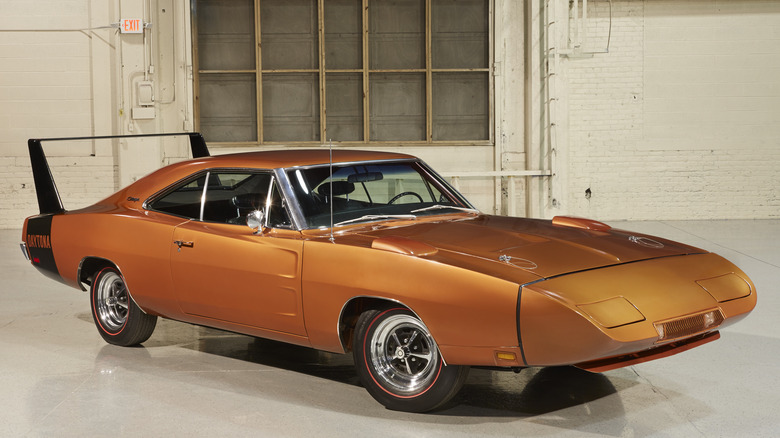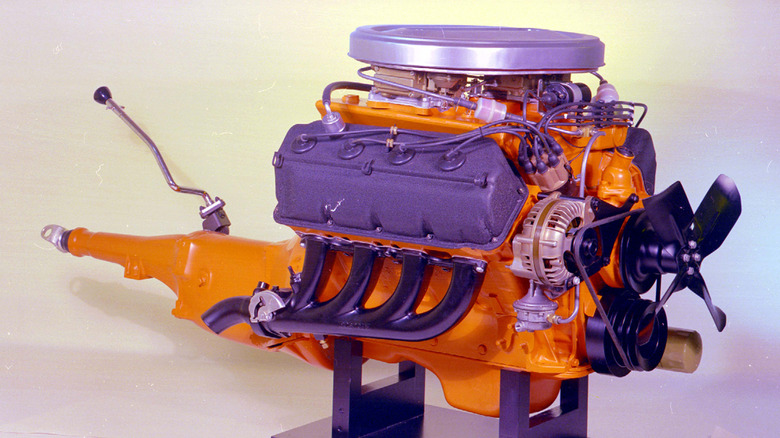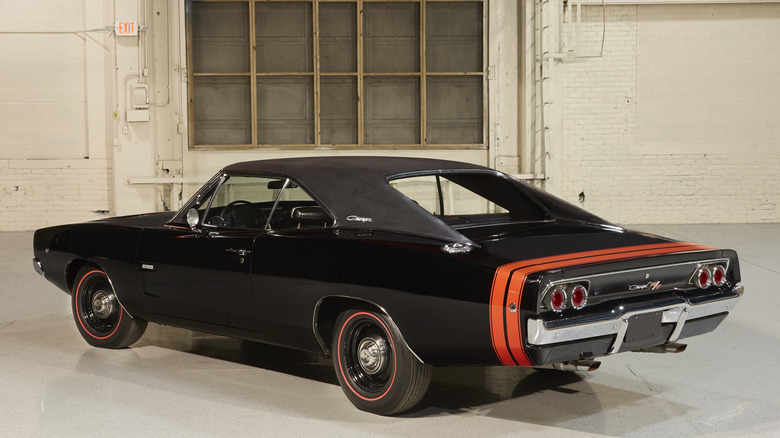How Much Horsepower Chrysler's 426 Hemi Produces (And What Years They Were Made)
The Chrysler 426 cubic inch Hemi engine was the second generation of the Hemi. It was produced from 1964 through 1971. Initially designed for NASCAR racing and not intended for use in street vehicles, the 426 Hemi quickly achieved success, taking the top four spots in the 1964 NASCAR Daytona 500 race. This overwhelming victory was too much for NASCAR (and Chrysler's competitors), leading to the closing of the specialized racing engine loophole starting with the 1965 racing season. Going forward, Chrysler would have to put the Hemi into its street vehicles if it wanted to use it in NASCAR.
The only problem was that Chrysler had not intended the Hemi to power production vehicles. It had no street version, so the company had to sit out the 1965 NASCAR season while it developed a version for the street. Meanwhile, Chrysler continued to use the Hemi in NHRA drag racing competition, where its use was still permitted.
Developing the 426 Hemi engine for the street
Turning the 426 Hemi from a high-strung, specialized racing engine into something drivable on the street presented some challenges to Chrysler engineers. To make the Street 426 Hemi more reliable and smoother in day-to-day driving, its compression ratio was reduced to run on consumer gasoline, its timing and its camshaft were less aggressive, the cylinder heads were switched from aluminum to iron castings, and both the exhaust and intake manifolds were redesigned. Aside from these changes, the 426 Hemi was very close to the Daytona-winning racing engine underneath, using the same bore, stroke, and layout. These changes resulted in an extremely robust performance engine for the street that was advertised to put out 425 horsepower and 490 lb.-ft. of torque. It is highly likely that these 426 Hemi numbers were lower than its actual output, which could have been a way to prevent auto insurance companies from charging excessive premiums to Chrysler 426 Hemi owners.
The first Chrysler vehicles available with the 426 Hemi were the 1966 models. These included the Dodge Coronet (through 1970), Dodge Charger (through 1971), Plymouth Belvedere (through 1970), and Plymouth Satellite (through 1971). In 1967, the Plymouth GTX (through 1971) could be ordered with a 426 Hemi. In 1968, the Dodge Dart Super Stock (one year only), the Dodge Super Bee (through 1971), the Plymouth Road Runner (through 1971), and the second-generation Plymouth Barracuda SS (one year only) had 426 Hemi availability. 1969 saw the addition of the winged, long-nosed Dodge Charger Daytona and Plymouth Superbird special models (both through 1970). In 1970, you could also get a 426 Hemi in a Dodge Challenger (through 1971), a third-generation Plymouth Barracuda (through 1971), and a Plymouth Fury GT (one year only).
The end of the Chrysler 426 Hemi
The Chrysler 426 Hemi engine reached the end of the line in production cars in the 1971 model year, which was the final opportunity to order this high-output engine in a Chrysler-produced vehicle. A number of factors led to the Hemi's demise: It was an expensive option to produce ($900, which included an upgraded transmission and rear axle), emissions regulations were about to strangle all automotive engines, and insurance rates on muscle cars were getting out of control. The 426 Hemi's time had come and gone.
A total of 10,904 426 Hemis were installed in Chrysler Corporation cars during that brief six-year period. Those that have survived have become legendary vehicles, powered by a direct descendant of a dedicated racing engine that won so many titles on both NASCAR tracks and NHRA drag strips.
Auction prices for these vehicles have supported this powerful legacy. The highest price ever reached at auction for a 426 Hemi-powered car was a 1971 Plymouth Barracuda Convertible, one of only seven made with the 426 Hemi during its last year of production. It brought $3.5 Million, and that was back in 2014! Thanks to their extremely high performance, racing cred, and small production numbers, these 426 Hemi-powered vehicles have become sound investments that are still great fun to drive.


